New Year, New Jewels: A Guide to Resetting Your Natural Diamonds
Experts weigh in on how to breathe new life into antique natural diamond jewelry.

Keepsake jewelry may have a place in our hearts but is often not worn on our bodies in active rotation with our other diamonds. When inherited pieces—a grandmother’s antique brooch or mom’s engagement ring—don’t fit your style vibe, often they are relegated to a dusty corner of the jewelry box. Fortunately, jewelers can reimagine treasured heirlooms into custom-made pieces you’ll actually wear, all the while maintaining sentimentality. And it’s as simple as resetting the natural diamonds. This also proves a perfect way to upcycle, as natural diamonds can always be reused and reimagined without losing value. Only Natural Diamonds looks at three jewelers that can turn any piece of fine jewelry into a new treasure you’ll want to add to your daily stack.
The Jared Foundry is the one-stop shop at the popular jewelry chain store for creating bespoke or reworking existing items into a fresh style. The Foundry, which has become an experiential focus of key Jared stores, allows clients to experiment and visualize possibilities for the new creation.
“We offer free jewelry box consultations, a one-on-one collaborative experience where customers bring in out-of-date, estate or even broken jewelry, and our jewelry consultants assist with determining what can be done with them. They reimagine and create a new design incorporating diamonds, gemstones or both,” explains Dana Schindler, Vice President of Marketing, Jewelry Services at Jared. “Customers wanting to design a custom piece receives, with Jared’s advanced design and technical capabilities, a CAD (Computer-Aided Design) rendering of the item first. This allows customers to see their creations come to life on screen. Next, a wax mold is made for review and to ensure proper sizing. Then we cast the new jewelry. But the number one step is to have fun,” Schindler adds.

At Jared, the aim is to have something to wear frequently. “Usually, customers bring in items that have been passed down to them, but the style isn’t them, so it isn’t worn. The pieces have sentimental value, so we encourage customers to make designs they will love incorporating the older piece’s stones.”
Often, after confirming that the stones are in good condition, this can mean mixing stones from several pieces. The opposite is also possible. “We also imagine one piece of jewelry into several pieces! Grandma’s multi-stone ring could become several necklaces or rings,” Schindler suggests.
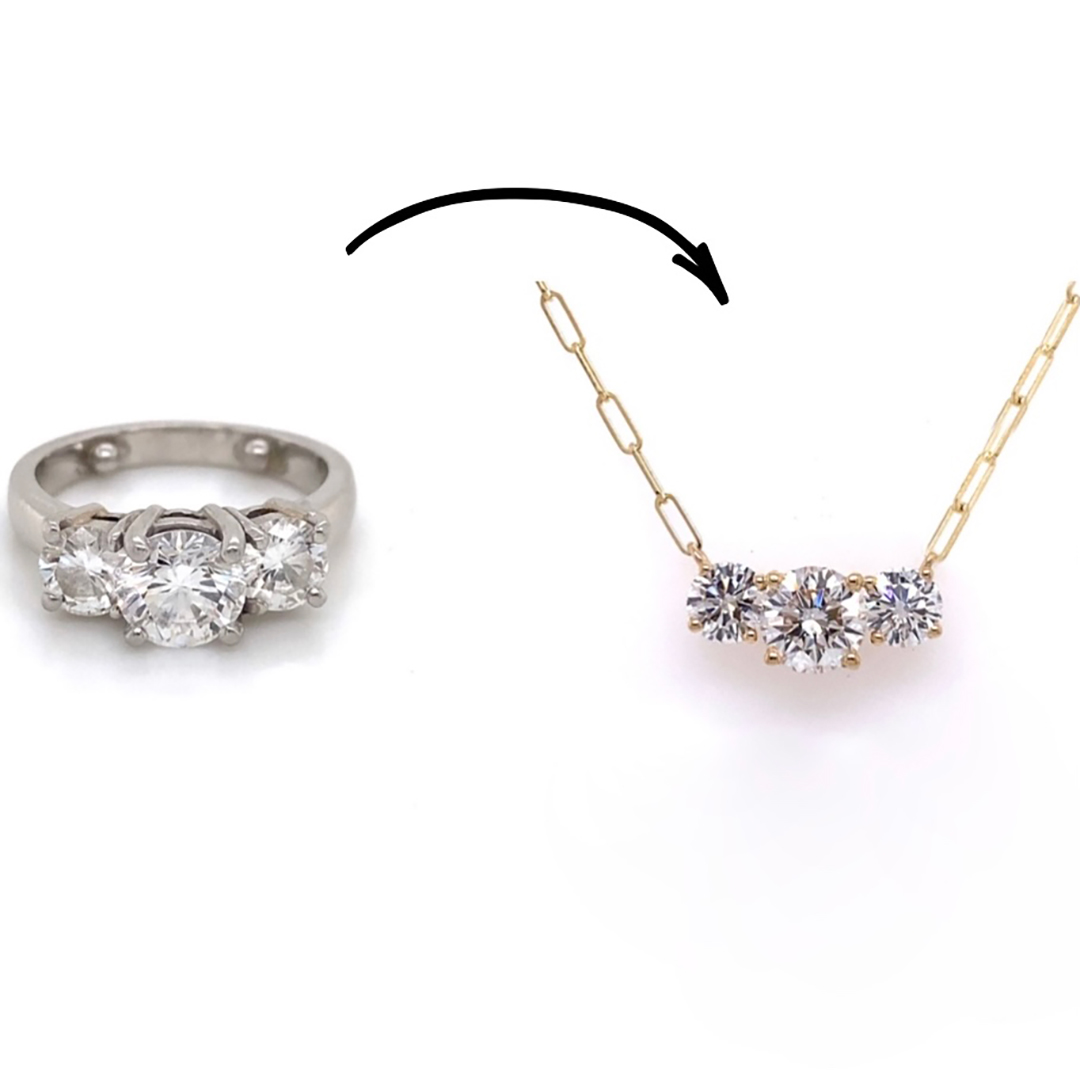
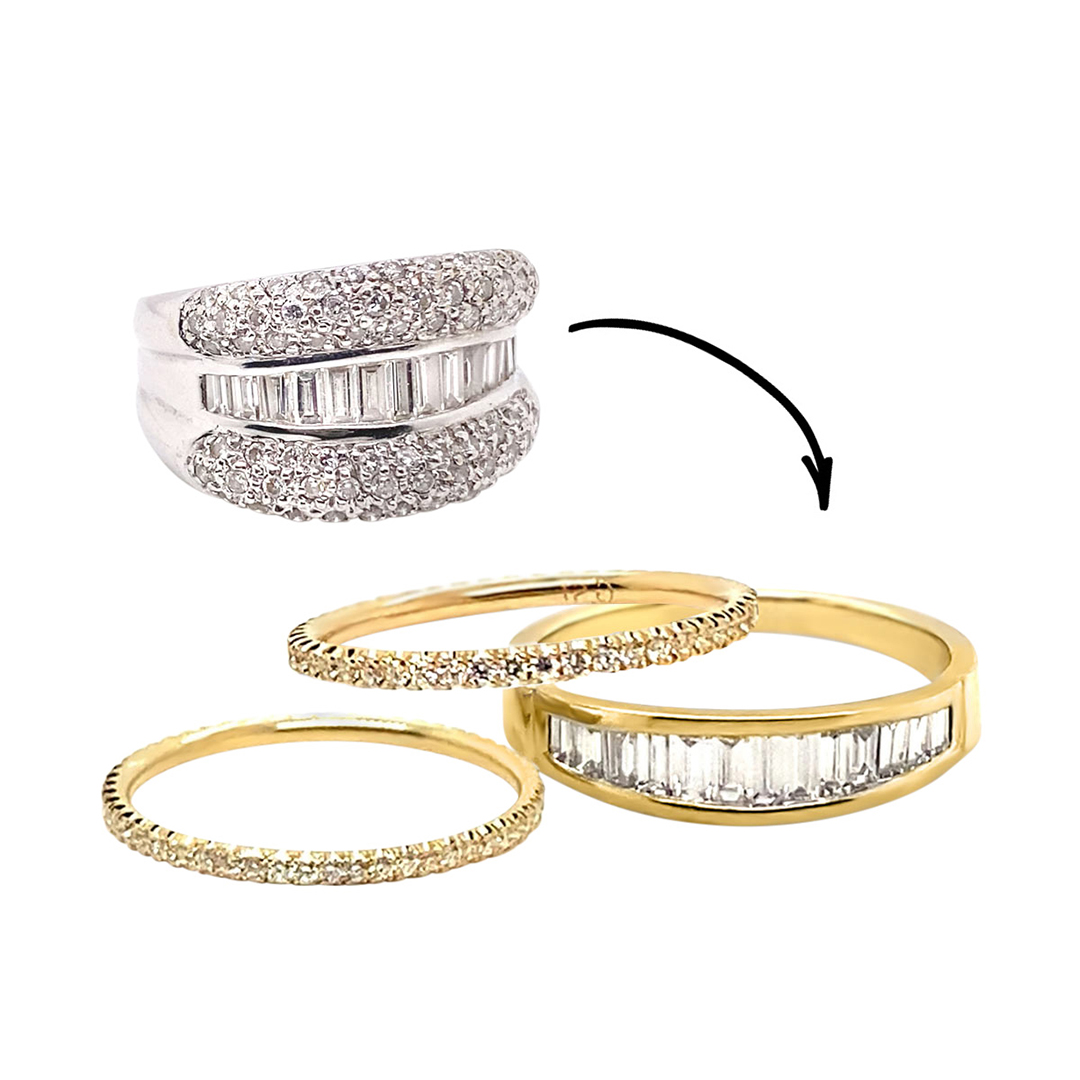
The executive cited one couple’s engagement ring journey. “We designed a ring with a young couple, creating a three-stone ring using one heirloom diamond from each of their grandmothers. The couple handpicked the new center stone, completing the sentimental ring with an intricate setting symbolizing their love story,” she continues.
Schindler points out that they can source and match additional stones but can’t alter or recut them. “The cut of the original diamond is integral as the piece is designed around the stone(s). Customers should consider that gemstones have different properties and durability.” Depending on the level of complexity or changes made, the process can take three to 12 weeks, with prices varying and estimated at the initial consultation.
The service has become more popular than ever, according to Schindler. “Reimagining can be a more economical way to create a new piece of jewelry and maintain the stone’s sentimental aspect, especially for customers looking for a unique personalized piece,” she asserts.
That customer runs the gamut, too, from a widow coming to reimagine their jewelry or grandchildren looking to give new life to inherited heirlooms. “It’s a truly individual experience. Customers love that they end up with a one-of-a-kind, cherished custom piece they had a hand in designing,” she enthuses.
Greenwich St. Jewelers
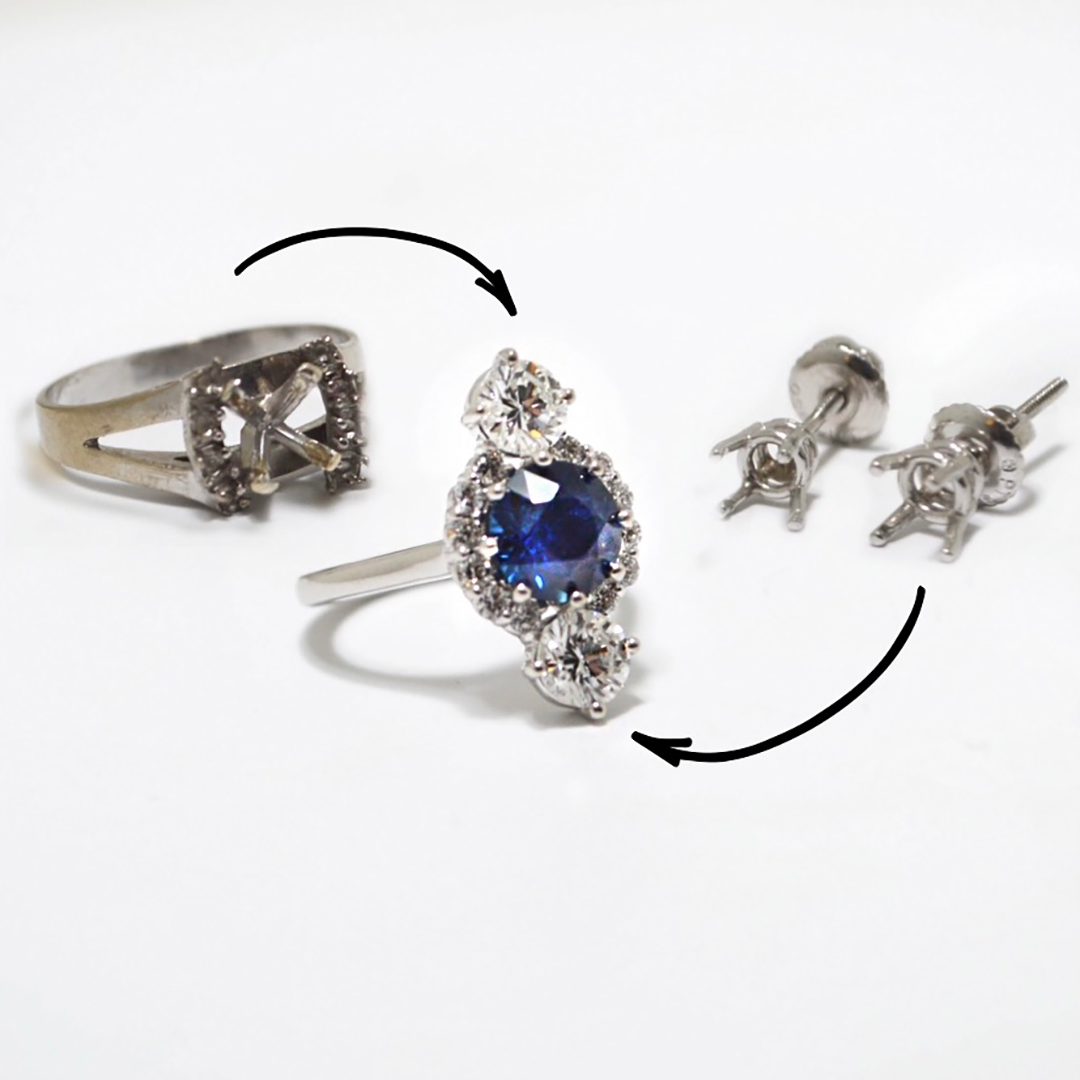
Jennifer Gandia, the second-generation owner of Greenwich St. Jewelers, takes a reverse approach when advising customers looking to redesign a piece. “I first tell the client to forget what you have for a moment and think about what you want. Then show them jewelry designs and inspirations that excite you. It’s difficult to look at a piece and reimagine it in your head,” she cautions. Once they identify what the customer gravitates towards, they workshop ways to transform the piece. “It’s our job to surprise them with what’s possible!” she adds.
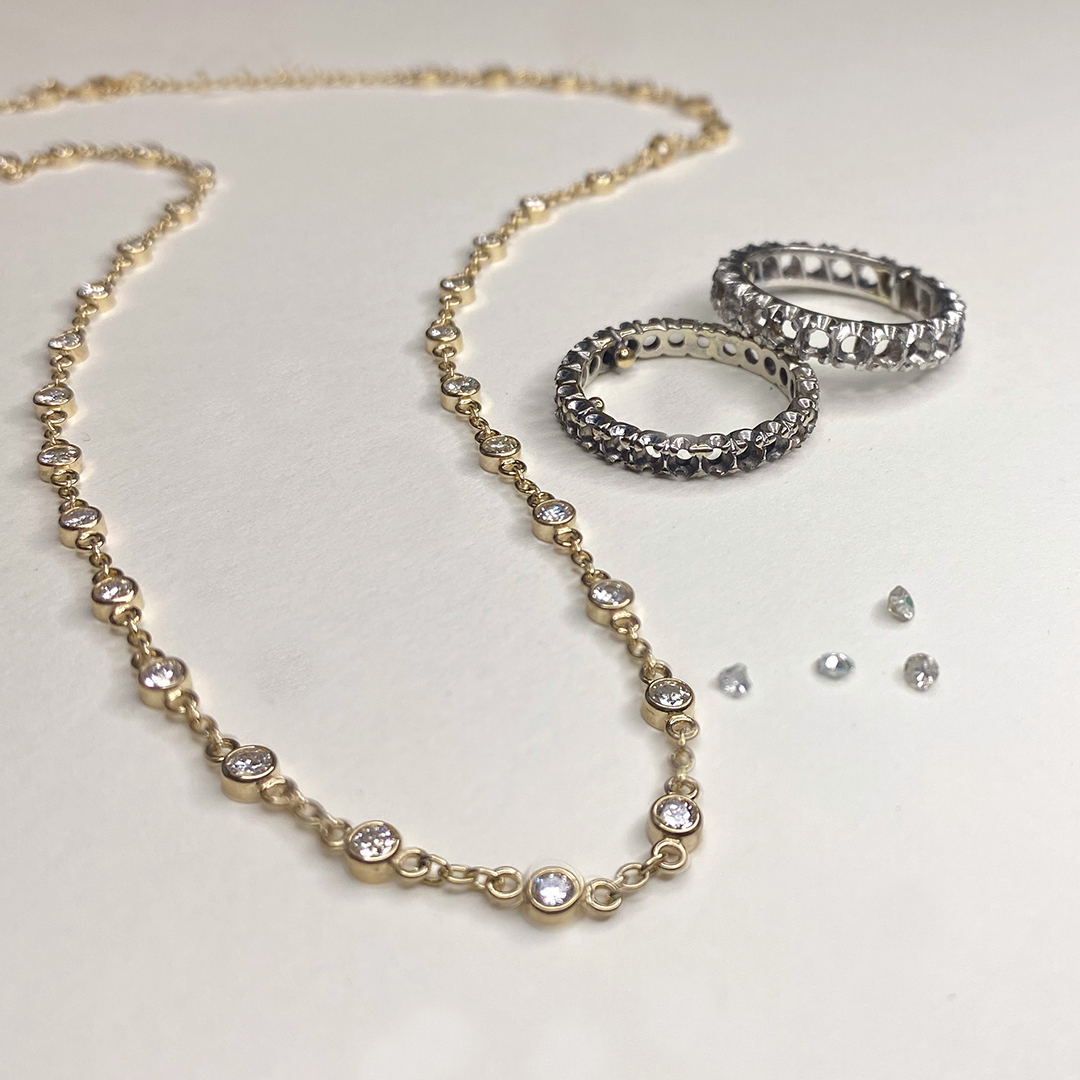
Several considerations go into recreating a piece of jewelry. Gandia recommends an inventory of their current wardrobe to assess what is missing and their overall style. “Perhaps a new piece can be created to fill that gap,” she offers. “It also helps to get a sense of their style. If they tend to wear modern, timeless or unusual vintage pieces, we know suggestions that match their style and seamlessly fit into their everyday look.” Gandia adds that an inspiration board from Pinterest or Instagram is also a good tool.
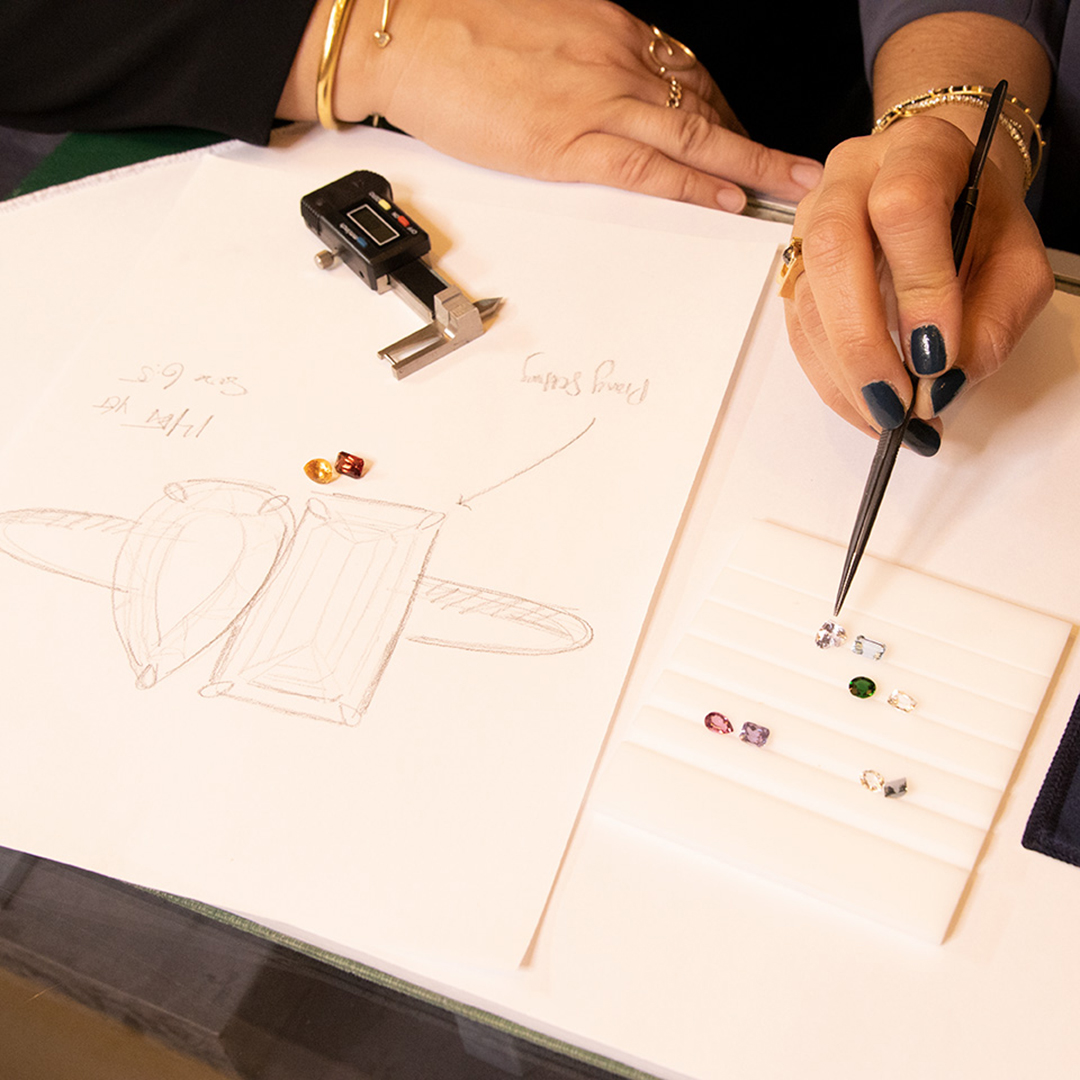
In some cases, clients present multiple pieces with various stones to create one new piece, such as earrings that lost their match, a broken bracelet or a brooch that doesn’t fit their style. Sometimes this works, but not in every case.
“We love to embrace the variety, but there are times when it’s best to keep it consistent,” she advises. “For example, it’s not recommended to mix cabochons with faceted gemstones like natural diamonds because of the difference in the cuts and depths of each one. Cabochons have a flat bottom, whereas faceted gems have a pavilion that adds depth and height.”
In cases where this is possible, new designs can “celebrate the variety,” according to Gandia
“If the color of the stones is different, consider how the metal color will impact the creation of the gems in the new jewel. Specific metal colors will enhance the color of the gemstones. For example, the contrast of yellow gold with an emerald makes it appear greener.
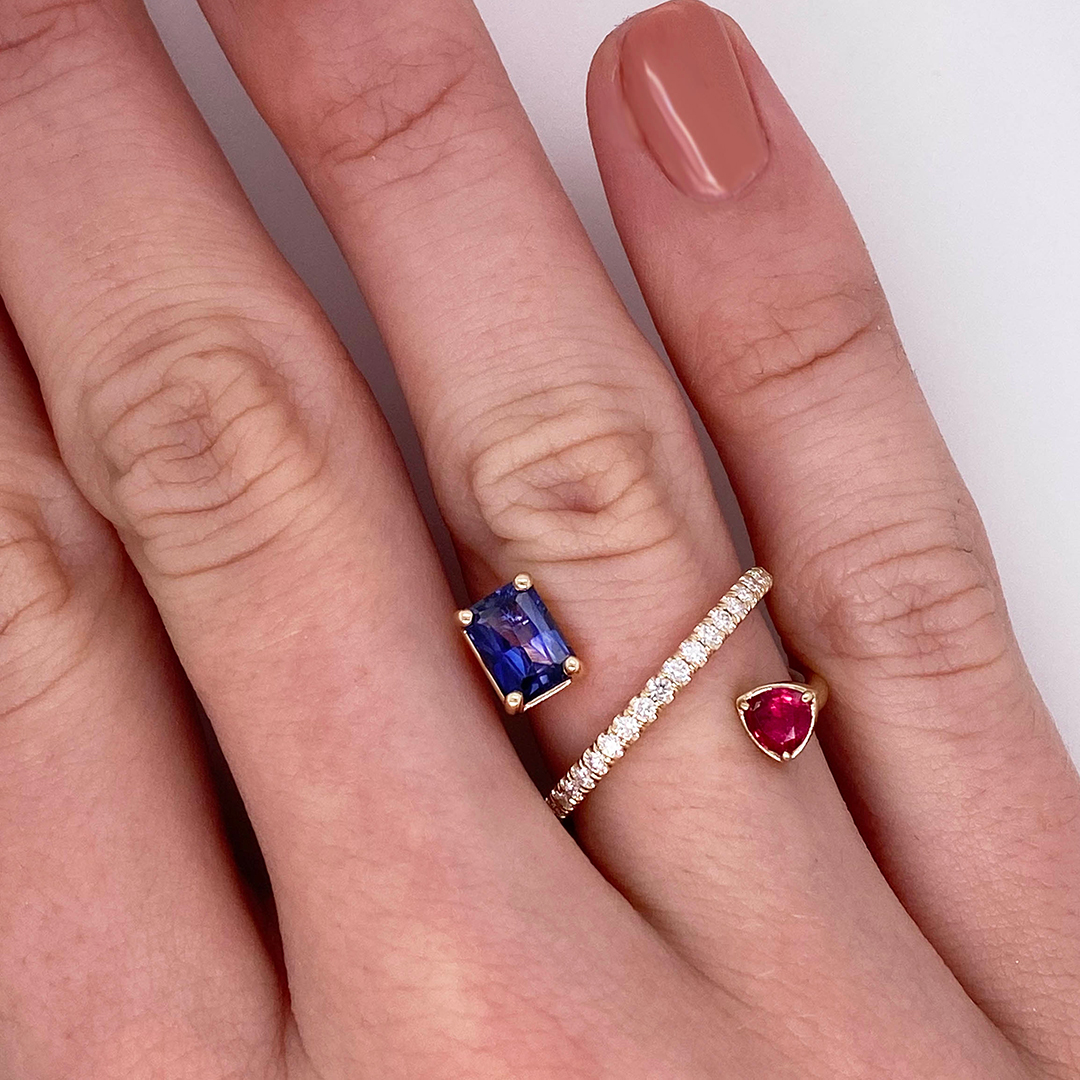
On the other hand, white gold or platinum will make the presence of color in a warmer diamond more apparent.” She also recommends keeping gemstones in their original shape. “We only recommend recutting or re-polishing when the gemstone looks worn, abraded or has a chip that needs to be removed,” says Gandia. The process usually takes six to eight weeks and starts at $1500.
Currently, Gandia’s team is following the unique transformation of a watch. “A client brought in their grandmother’s watch, hoping to transform it into an opal necklace. We custom cut an opal to the same size and shape as the watch face and designed it into a pendant they can wear daily.”

It’s an example that sums up the jewelry transformation process for most, which has seen an increase in recent years at the beloved downtown New York jewelry outpost. “Each redesign process is unique to that person’s memories, experience with the pieces or the journey the jewel took to arrive in their possession. It’s a very personal process and always initiated for different reasons,” says Gandia. “The one thing they all have in common is the desire to breathe new life into a piece of jewelry, the appreciation for consciously transforming materials and the ability to keep their imagination open to new possibilities.”
Alison Lou
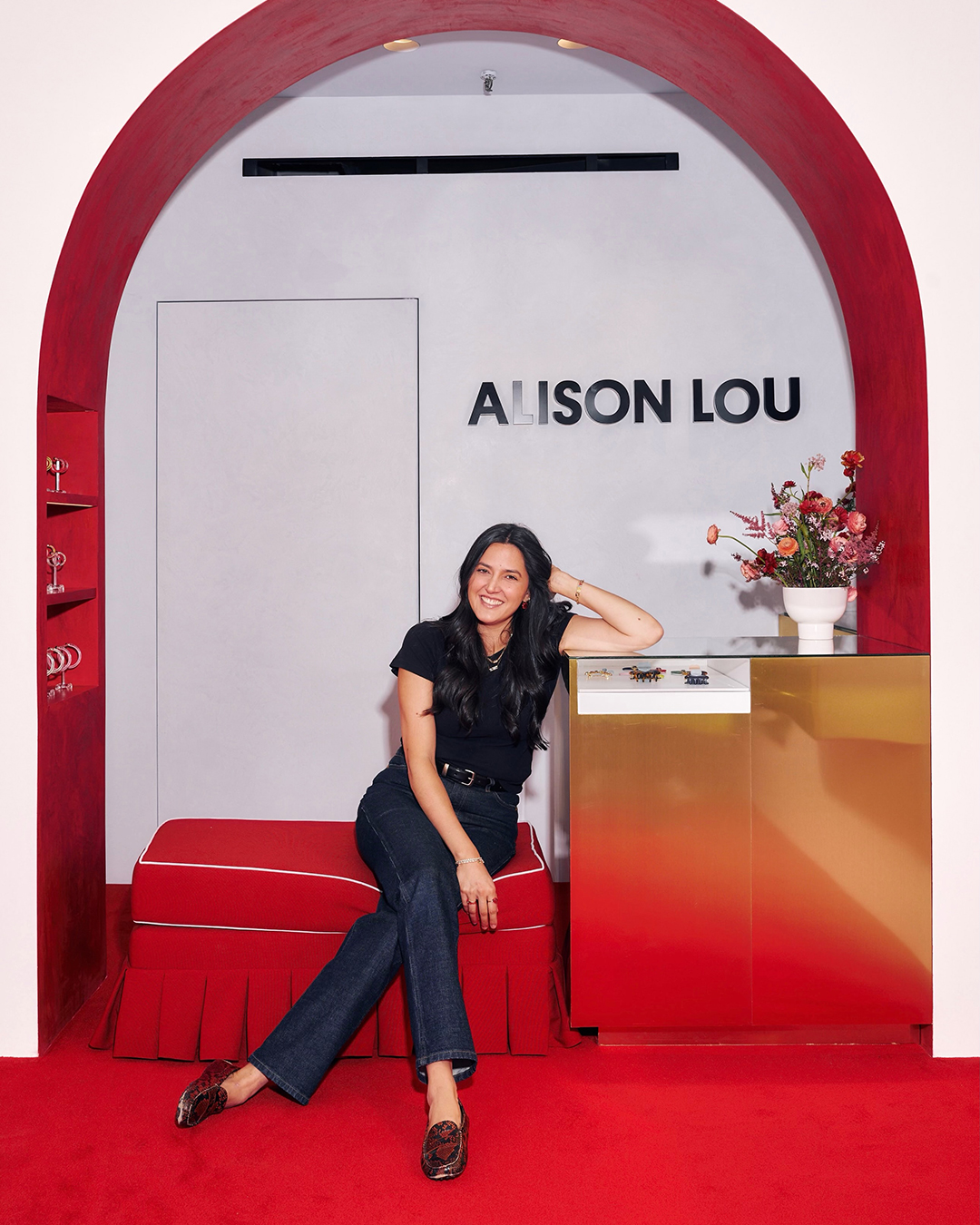
When it comes to making a new piece of jewelry out of an old one by resetting the stone, Alison Lou, the jeweler known for her whimsical chic style, says, “I do.” The New York jewelry designer has become a go-to for chic brides-to-be and jewelry aficionados looking to refresh a piece.
Lou has noticed an uptick in her resetting services for clients that want to reimagine their diamonds. “Resets are really fun projects. I get to connect and understand my clients much better through the design process. I encourage clients to have fun with the design process and trust the ‘I Do By Lou’ process.” she affirms. Lou is referring to the fact that customers only see a 3-D rendering of the jewelry before committing to it.
Lou’s recreations are highly unique, which has become increasingly crucial to her customers. The process starts with the basics. “The first piece of advice we give for clients interested in resetting a stone is to determine what they want: a ring, necklace, bracelet, earring, etc.”
After meeting in person, the project’s scope is determined to include practical factors.
“We identify what the customer envisions and begin to discuss pricing, project timeline and if their designs are feasible with what they’ve brought to us,” she said, noting the process takes six to eight weeks (the majority of which is the design time). Priced per job, the service starts at $500 for the design fee, and then goes up according to plan. “Resets are more expensive than buying something in stock because we create a completely new model and design,” she says.
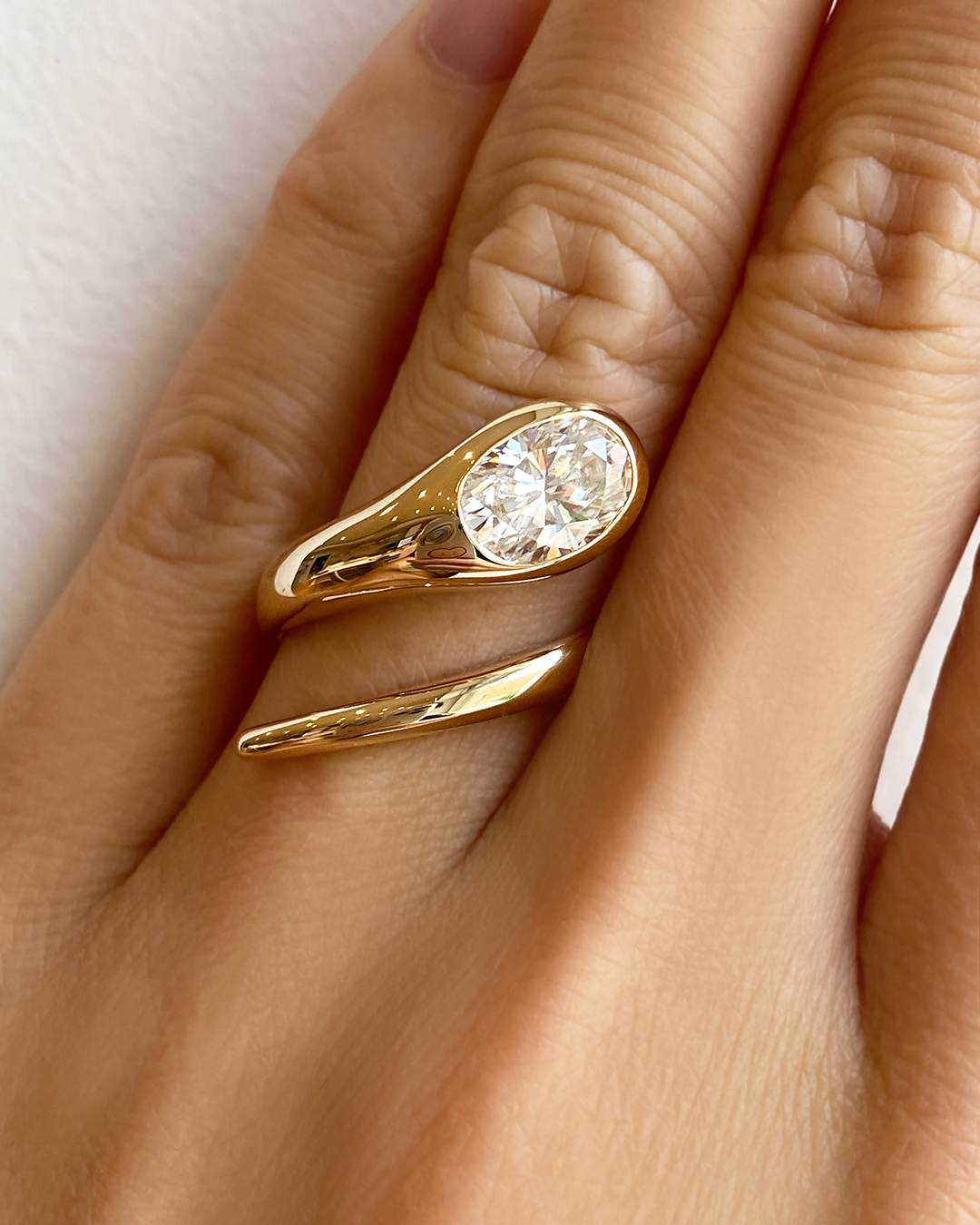
The drive, thus, is not bargain hunting but achieving a special or upcycled look. Some resets can even inspire new house designs. “The Beth ring is one of my favorite reset projects with a unique design,” she continues. It all began when Aa long-time client and friend brought in her original engagement ring—a five carat oval set solitaire—to be reset. “We created a snake-like ring, using the oval diamond as the snake’s head. The ring wrapped around her finger, and I was blown away by the final result,” Lou recalls. The Beth Ring is now one of the brand’s “I Do By Lou” settings, receiving multiple inquiries to be remade for other clients.
After unsetting the stone from the original setting, Lou’s team creates a CAD and 3-D rendering for design approval. The client can make up to three edits before finalizing the new piece and sending it to production. Lou’s enthusiasm for the process leaves an anything-is-possible feeling, especially when it comes to mixing diamonds. “We love mixing diamonds with gemstones, both precious and semi-precious. Our Babs ring is the perfect example of this!” she declares.
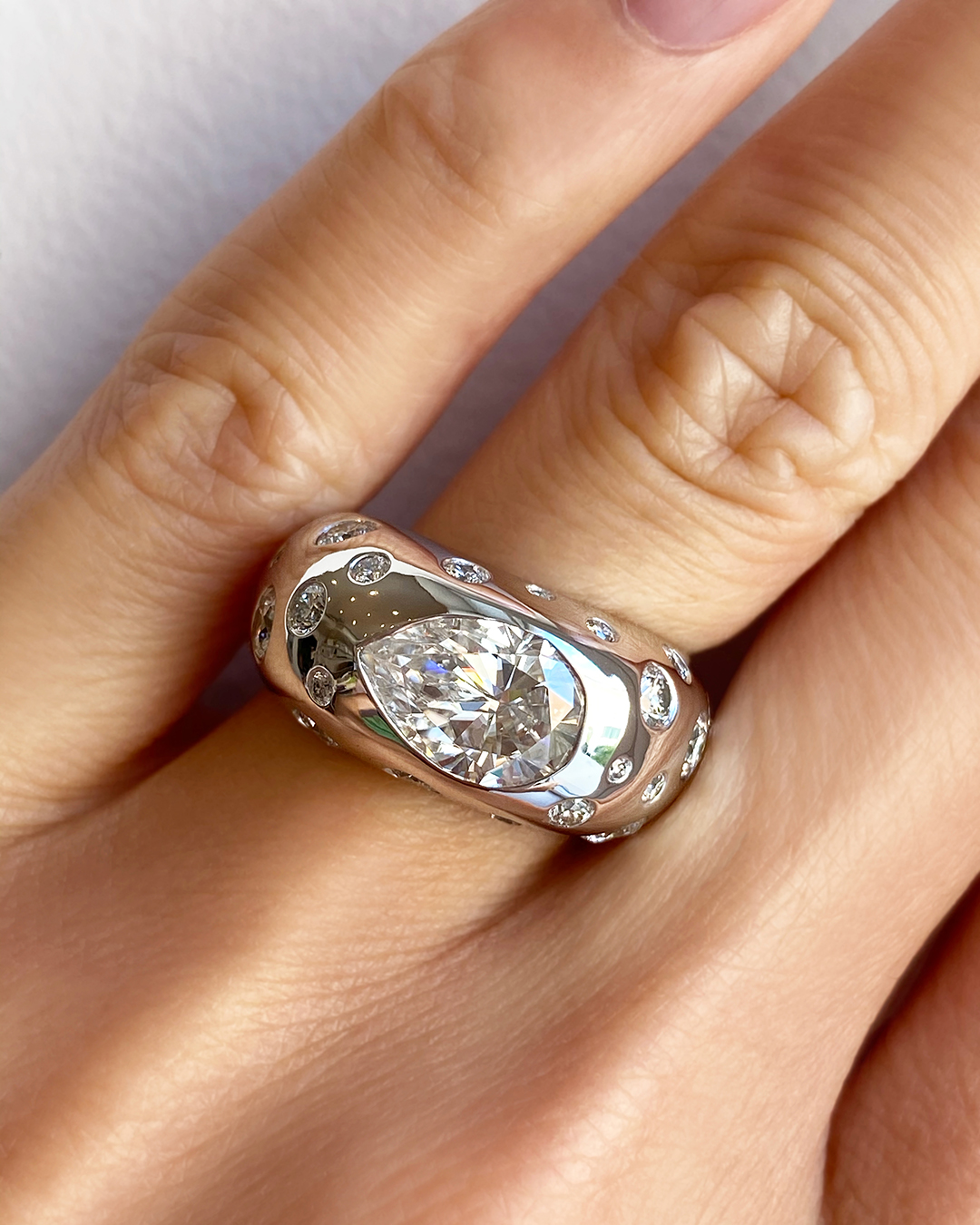
While brides love creating a new ring, the jeweler insists there is no one typical client. However, a majority are engagement rings that married clients decide to update. “We have so many traditional three-stone or solitaire settings, typically in platinum. Now, our clients want something much more modern, incorporating a chunkier gold look and even enamel!”
